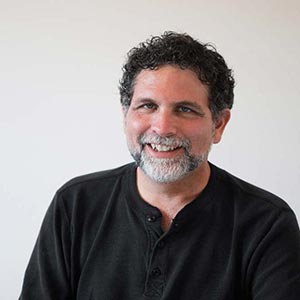I have been thinking more and re-reading Dewey’s paper on the reflex arc and wanted to add a second post with fuller thoughts. At the end of my last post I mentioned that Dewey’s conception of a continuous “circuit” between stimulus and response was similar to the ideas of B.F. Skinner and that seems even more the case to me after reading the comments of Carl – my friend and loyal reader which often add important clarifications and distinctions that I have missed. I recommend reading his posted comments along with others that you will find here.
In his paper on the reflex arc Dewey is stating that the idea of “stimulus and response” is overly simplistic. The classic stimulus/response scenario involves an object that when in the presence of a person results in an action. For instance a lion results in a person running. We can immediately see even in this example – one that seems pretty clear cut (who wouldn’t run in the presence of a lion) that the simple stimulus/response definitions are to general for every case. In a zoo for instance you have the same stimulus, a lion, but the environment in which you see it changes the response. Also if you are in the wild, but you are hunting for lions, again the same stimulus will create a different response. You can’t separate the stimulus from the environment and that means both the physical environment (ie. being in a zoo) and the mental environment (ie. the mental state of a hunter.)
In more general terms what Dewey recognized is that the term “stimulus” and the term “response” are both mental labels (what Peirce would call signs) for intricate sets of processes. The stimulus is not “the lion”. It is the intricate set of visual images, sights, sounds, mental images, thoughts, understandings, motivations, memories, emotional sensations, physical sensations, muscular movements etc. that make up the experience of that particular lion at that particular moment. The “response” is similarly a label for the intricate set of visual images, sights, sounds, mental images, thoughts, understandings, motivations, memories, emotional sensations, physical sensations, muscular movements etc. that are utilized in running.
The bottom line is that the so called stimulus and the so called response are actually made up of exactly the same stuff. (This notion – that reality is made up of one fundamental kind of stuff, weaves throughout American Philosophy from Emerson through James and Peirce to Dewey and today is part of the bedrock of Integral Theory and Evolutionary Enlightenment as I understand them.)
According to Dewey both stimulus and response are essentially made up of intricate sets of visual images, sights, sounds, mental images, thoughts, understandings, motivations, memories, emotional sensations, physical sensations, muscular movements etc. The boundary between them is an abstract distinction based on the perceived function that each appears to play when interpreted by a human observer. If we use the metaphor of currents in the ocean, the “current” and the “ocean” are abstract human interpretations of and labels for complex sets of qualities of water.
Dewey, following William James, used the word “experience” to label the intricate set of visual images, sights, sounds, mental images, thoughts, understandings, motivations, memories, emotional sensations, physical sensations, muscular movements etc. that make up any given moment. I believe that B.F. Skinner was using the word “behavior” to label the very same set of elements.
What we see here is continuity again. The universe is made up of one kind of stuff and the distinctions between perceived objects are abstract human interpretations. Now William James took this to its extreme claiming that the human experience of an object was the totality of the object. Dewey didn’t go that far. He insisted that there were real objects in a real world, but they were in a constant of dynamic equilibrium that made up the totality of experience.
It seems to me that where Skinner was exploring how human transformation could be catalized by manipulating the environment, Dewey (and James) were exploring how human transformation could be catalized by manipulating the way peoople relate to ideas.
